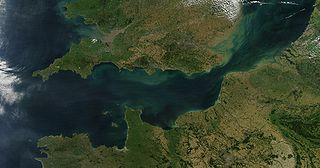 Tamzine on display at IWM London, August 2012 | |
| History | |
|---|---|
| Name: | Tamzine |
| Builder: | Brockman & Titcombe, Margate |
| Launched: | 1937 |
| Homeport: | Birchington-on-Sea |
| Honours and awards: | Dunkirk 1940 |
| Status: | Preserved by Imperial War Museum |
| Notes: | Smallest known 'little ship' of Dunkirk |
| General characteristics | |
| Type: | Open fishing boat |
| Length: | 14ft 7.5ins |
| Beam: | 5ft 1.5ins |
| Draught: | 1ft 6ins |
| Propulsion: | Outboard motor/sail |
Tamzine is a historic fishing boat. Built by Brockman & Titcombe, of Margate in Kent, in south-east England, Tamzine is notable for having participated as a ''little ship' during the 1940 evacuation of the British Expeditionary Force from Dunkirk in northern France.

Margate is a seaside town in Thanet, Kent, England, 15 miles (24.1 km) north-east of Canterbury, which includes Cliftonville, Garlinge, Palm Bay and Westbrook.

Kent is a county in South East England and one of the home counties. It borders Greater London to the north west, Surrey to the west and East Sussex to the south west. The county also shares borders with Essex along the estuary of the River Thames, and with the French department of Pas-de-Calais through the Channel Tunnel. The county town is Maidstone.

England is a country that is part of the United Kingdom. It shares land borders with Wales to the west and Scotland to the north-northwest. The Irish Sea lies west of England and the Celtic Sea lies to the southwest. England is separated from continental Europe by the North Sea to the east and the English Channel to the south. The country covers five-eighths of the island of Great Britain, which lies in the North Atlantic, and includes over 100 smaller islands, such as the Isles of Scilly and the Isle of Wight.
At 14.7 feet (4.5 m) in length Tamzine was the smallest vessel to take part in the evacuation. She is clinker-built of Canadian spruce and was constructed in 1937. In 1965 Tamzine participated in a twenty-fifth anniversary commemoration of the evacuation, repeating her Channel crossing. Her presence was recorded by the British newsreel Pathé News. [1]

Clinker built is a method of boat building where the edges of hull planks overlap each other. Where necessary in larger craft shorter planks can be joined end to end into a longer strake or hull plank. The technique developed in northern Europe and was successfully used by the Anglo-Saxons, Frisians, Scandinavians, and typical for the Hanseatic cog. A contrasting method, where plank edges are butted smoothly seam to seam, is known as carvel construction.

The English Channel, also called simply the Channel, is the body of water that separates Southern England from northern France and links the southern part of the North Sea to the Atlantic Ocean. It is the busiest shipping area in the world.

Pathé News was a producer of newsreels and documentaries from 1910 until 1970 in the United Kingdom. Its founder, Charles Pathé, was a pioneer of moving pictures in the silent era. The Pathé News archive is known today as British Pathé. Its collection of news film and movies is fully digitised and available online.
Tamzine was later acquired and preserved by the Imperial War Museum. [2] [3]

Imperial War Museums (IWM) is a British national museum organisation with branches at five locations in England, three of which are in London. Founded as the Imperial War Museum in 1917, the museum was intended to record the civil and military war effort and sacrifice of Britain and its Empire during the First World War. The museum's remit has since expanded to include all conflicts in which British or Commonwealth forces have been involved since 1914. As of 2012, the museum aims "to provide for, and to encourage, the study and understanding of the history of modern war and 'wartime experience'."
 |











